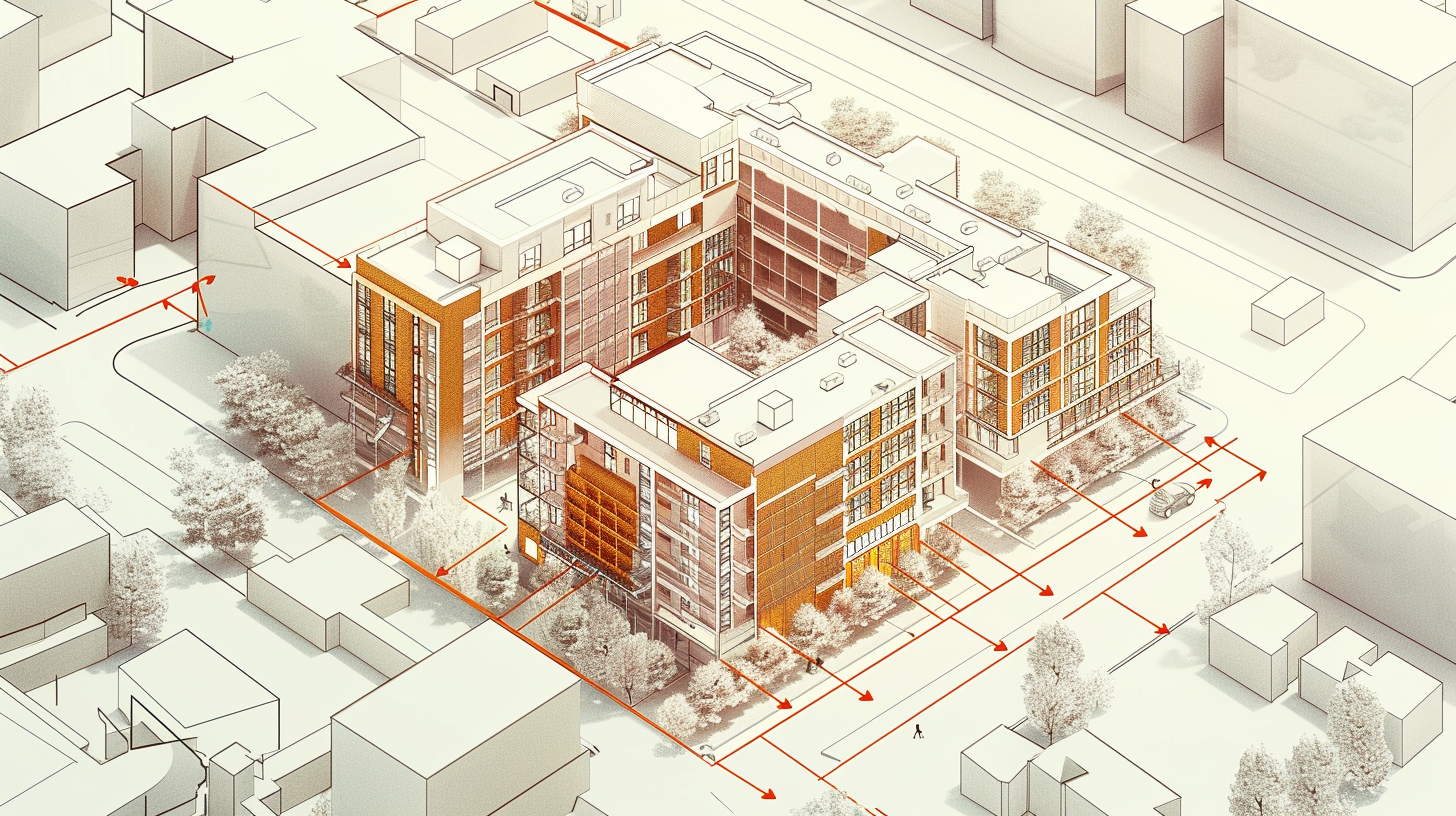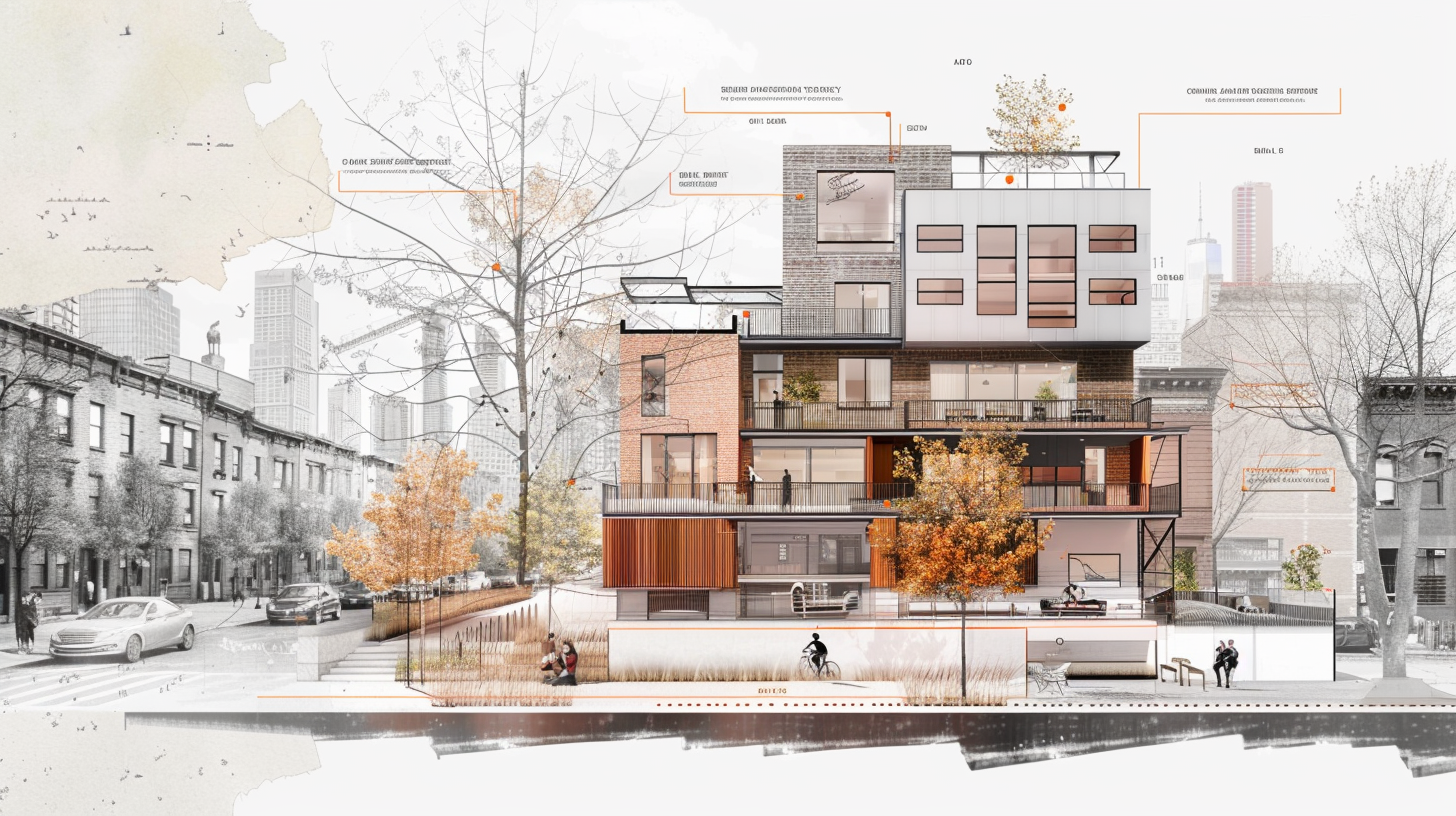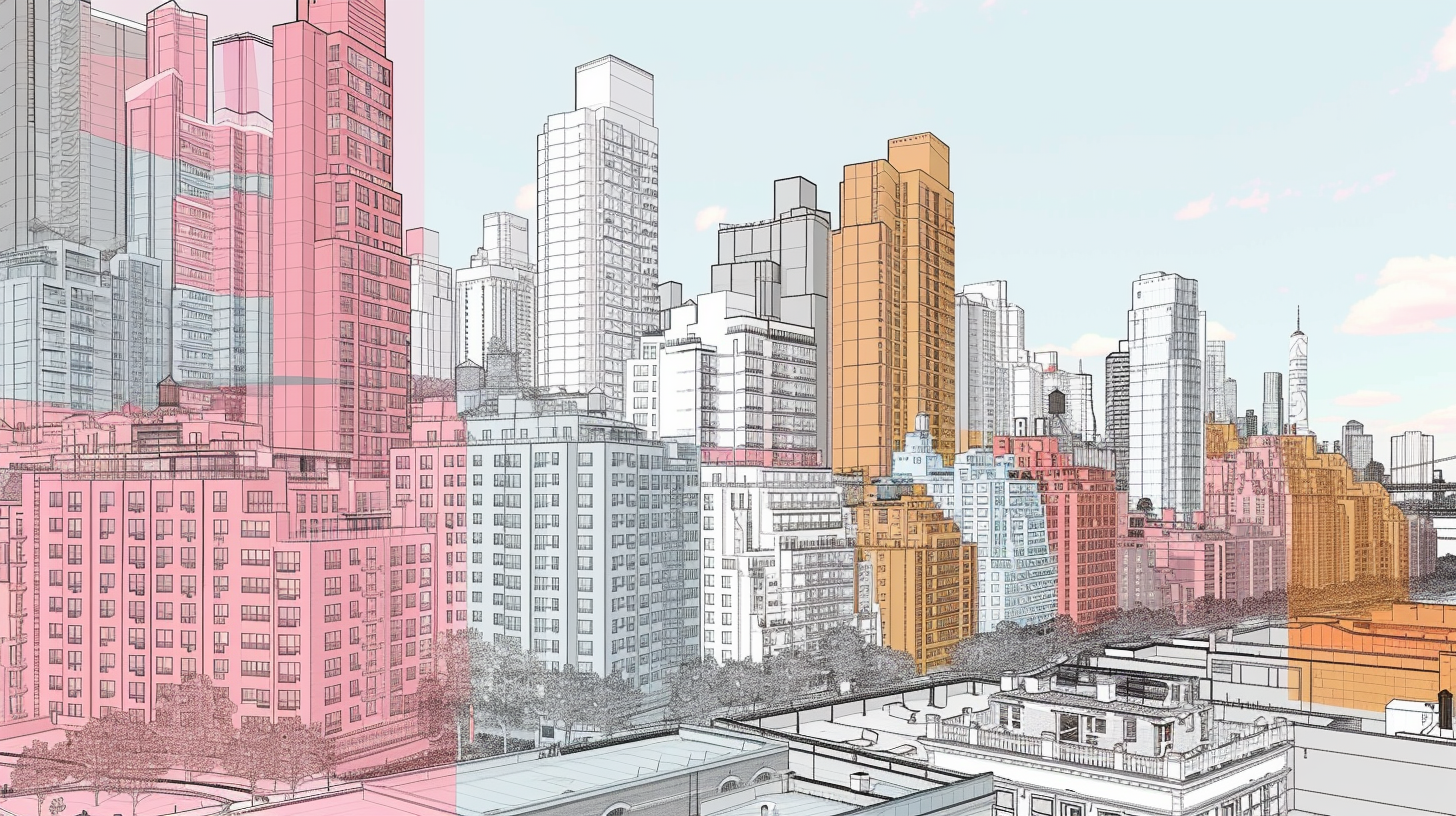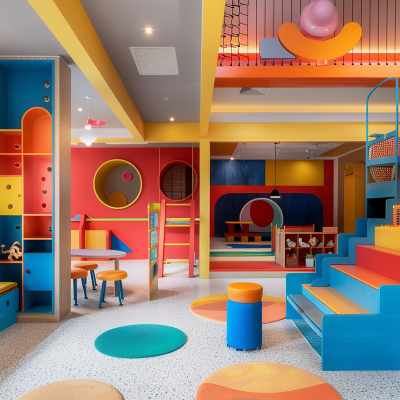Part 4 THE AI DEEP DIVE - Navigating the Crossroads
2024.06.13

In our fourth installment exploring the impacts of AI on architecture, we will be looking at code; the backbone component often demanding extensive labor and resources. This discussion aims to showcase the challenges and shifts in the architectural landscape driven by AI's increasing involvement.
Understanding and implementing codes in architecture is a demanding task that requires considerable effort, cost, and expertise. The complexity, and liability, increases significantly when incorporating building codes into AI systems. Incorrectly interpreted zoning laws by these systems can lead to design proposals with inaccurate setbacks, dimensions, or density specifications. However, AI has the potential to drastically reduce human error, ensuring higher accuracy and consistency in code compliance, which can lead to safer and more efficient buildings.

For instance, AI-powered software like UpCodes is advertised to automatically detect and highlight potential code violations in architectural plans. This allows architects to identify and correct errors early in the design process. Another example is Autodesk’s BIM 360, which integrates AI to analyze building models for compliance with building codes and standards. These systems can quickly process vast amounts of data and cross-reference design elements with applicable regulations, ensuring thorough and accurate compliance checks. The key to both, and other AI software, to succeed is the original data input must be verified.
Despite its potential, integrating AI into architectural practices faces significant hurdles. The training effort alone is substantial, often beyond the reach of smaller firms. Larger companies may have the financial capability but lack immediate incentives to invest in AI, preferring to focus on profitable, established operations. Current practices in the industry lean towards assigning interns to conduct feasibility studies instead of training or hiring staff specifically on code expertise. This short-term perspective overlooks AI's potential in architecture. Nonetheless, AI can democratize access to sophisticated design tools, enabling smaller firms to compete more effectively and innovate without the same level of resource constraints.

An unintended consequence of AI integration could be market domination by large software firms offering generic, one-size-fits-all solutions. Such "Architect-AI-for-ALL" services would provide property owners with generic, code-compliant buildings, potentially leading to a homogenized landscape lacking cultural and local context. This shift risks reducing those services to a practice of mere box-ticking and cost-cutting. Architects and clients often seek designs that resonate with human experiences and local contexts, areas where AI currently falls short of a sensitivity essential for spaces that foster connection and cultural continuity. Yet, when used appropriately, AI can handle the mundane, repetitive tasks, freeing architects to focus on creating unique, contextually rich designs that resonate deeply with human experiences.
Understanding and implementing codes in architecture is a demanding task that requires considerable effort, cost, and expertise.

The industry stands at a crossroads, tasked with balancing AI convenience and maintaining the human touch that defines memorable and sustainable spaces. The challenge isn't choosing between AI and human architects, but establishing a relationship where technology works together and not against our design intent. This partnership would allow architects to focus on culturally and contextually relevant designs while AI handles repetitive, code-driven tasks. The journey ahead requires balanced approaches and openness to evolving with these transformative tools. By fostering a collaborative relationship between AI and human creativity, the future of architecture can embrace both innovation and cultural resonance.
Larger companies may have the financial capability but lack immediate incentives to invest in AI.






